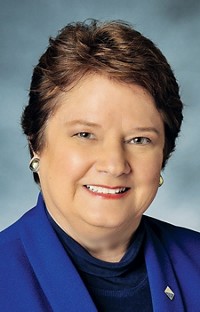Advertisement
Grab your lab coat. Let's get started
Welcome!
Welcome!
Create an account below to get 6 C&EN articles per month, receive newsletters and more - all free.
It seems this is your first time logging in online. Please enter the following information to continue.
As an ACS member you automatically get access to this site. All we need is few more details to create your reading experience.
Not you? Sign in with a different account.
Not you? Sign in with a different account.
ERROR 1
ERROR 1
ERROR 2
ERROR 2
ERROR 2
ERROR 2
ERROR 2
Password and Confirm password must match.
If you have an ACS member number, please enter it here so we can link this account to your membership. (optional)
ERROR 2
ACS values your privacy. By submitting your information, you are gaining access to C&EN and subscribing to our weekly newsletter. We use the information you provide to make your reading experience better, and we will never sell your data to third party members.
Industrial Safety
Reactions
September 6, 2019
| A version of this story appeared in
Volume 97, Issue 35
Letters to the editor
Industry’s community outreach
I found your article “Community Outreach 35 Years after Bhopal” (Aug. 12, 2019, page 24) very interesting and balanced.
There is another piece of important history that played a major role in developing community outreach for the industry and the Charleston, West Virginia, community. It was called Safety Street, conducted June 3 and 4, 1994, when 13 chemical plants from eight chemical companies shared 31 worst-case scenarios with the 300,000 people living in the greater Charleston community. This effort, which I helped lead as a plant manager at DuPont, was the first large-scale sharing of worst-case scenarios with the public in the US. This was a 2-year planning and development effort involving the public, the companies, the first responders, the hospitals, state and Kanawha County emergency response officials, environmentalists, the media, and even the Environmental Protection Agency on occasion. No one knew how to do something like this, so we all had to learn together.
The technical and communications committees, led by community people, did pioneering work in bringing the complexity of this effort to the point where everyone could participate and understand the work being done to prevent releases and improve safety. Pam Nixon and Mildred Holt, leaders of People Concerned about MIC, as well as Paul Hill, president of the National Institute for Chemical Studies in Charleston, were deeply involved in helping bring this effort to the public. Paul Hill was the chairperson of the technical committee, and Mary Frances Bleidt was chairperson of the communications committee.
This was a 2-day event with presentations and displays staffed by plant managers and their staff. The first day was in the Charleston Convention Center, and the second, a full day, with displays with plant managers and staff present and available to talk with anyone, was in the Charleston Town Center mall on a big Saturday shopping day. Each company had its displays set up in various places throughout the mall. It is estimated that 3,000–4,000 people interacted with the industry people during these days. The level of interest was quite high.
Trust and openness went up. The New York Times, the London Times, and CNN reporters told me this was a terrific thing happening in a community that had been through such difficult times. This effort became a model for community outreach for the industry.
An important outgrowth of this effort was the formation of the US Chemical Safety Board. Paul Hill became the first chairman of the board.
Richard N. Knowles
Saint Petersburg, Florida




Join the conversation
Contact the reporter
Submit a Letter to the Editor for publication
Engage with us on Twitter